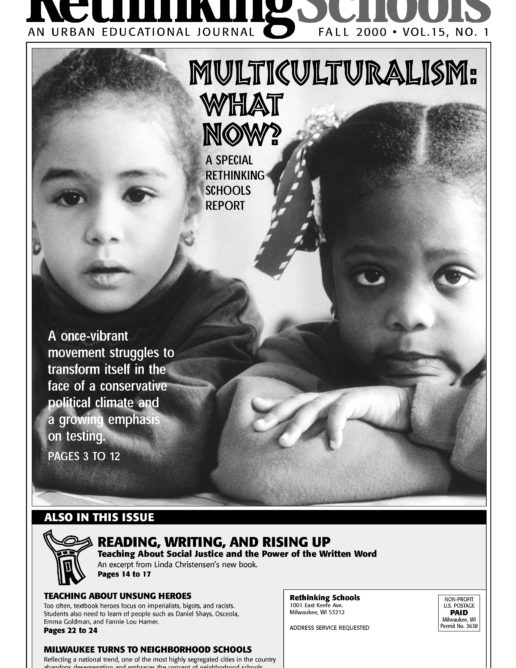Preview of Article:
Origins of Multiculturalism
Multicultural education can be traced historically to the CivilRights Movement. African-American scholars and educators, workingin conjunction with the Civil Rights Movement as a whole, providedmuch of the leadership of multicultural education.
The term “multiethnic education” was used to bridge racial andethnic groups: “multicultural education” broadened the umbrellato include gender and other forms of diversity. The term “culture”rather than “racism” was adopted mainly so that audiences of whiteeducators would listen. As a result, however, many white educatorshave pulled multicultural education away from social strugglesand redefined it to mean the celebration of ethnic foods and festivals;the field is sometimes criticized as having turned away from itsinitial critique of racism in education. It is important to locatemulticultural education in the Civil Rights struggle for freedom,political power, and economic integration.
The late 1960s and early 1970s witnessed several other movementsthat have connected loosely with multicultural education. Thewomen’s movement gained strength and impacted schools with passageof Title IX in 1972. Although the women’s movement has had a whitemiddle-class orientation, there has been continued effort on thepart of some workers to link struggles against racism with strugglesagainst sexism. Bilingual education was advanced in the late 1950sby Cubans fleeing Castro’s revolution. This was a relatively privilegedminority. Since then Mexican Americans, Puerto Ricans, and AsianAmericans have advanced bilingual education legislation, theory,and practice. The history and development of bilingual educationis somewhat separate from that of multicultural education, althoughthe two have grown in a mutually reinforcing symbiosis. Also duringthis time, ethnic studies and women’s studies departments wereestablished on some university campuses, providing a basis forcontemporary debates about multiculturalism in higher education.
Multicultural education frames inequality in terms of institutionalizedoppression and reconfigures the families, and communities of oppressedgroups as sources of strength. By the early 1980s, this formulationwas turned on its head in the dominant discourse about education.Discussions about education were framed mainly in terms of howto enable the United States to maintain international supremacyin the Cold War and the “trade war.” The early 1980s saw a waveof educational reform reports, beginning with the National Commis-sionof Excellence in Education, A Nation at Risk (1983). In this context,students of color, those from poverty areas, and those whose firstlanguage was not English were defined as “at risk” of failure,and their homes and communities were defined as culturally deprivedand morally depraved.
Nevertheless, by 1985 demographic data reports were informingeducators and the general public that people of color would becomethe majority during the 21st century, and multicultural educationreceived renewed attention. At the K-12 level, workshops on multiculturaleducation became “in” again, with many teachers interpreting itto mean teaching supplementary lessons about “other” cultures.Multicultural educators had made some substantive changes in curricula,however, which led to fierce battles in states such as Californiaand New York. In higher education, lively debates about the canonwere met by conservative challenges against “political correctness.”The roots of Western civilization were connected with Africa andAsia, a connection that was fiercely rejected by those who fearedthat the loss of European supremacy would mean loss of civilization.</p

